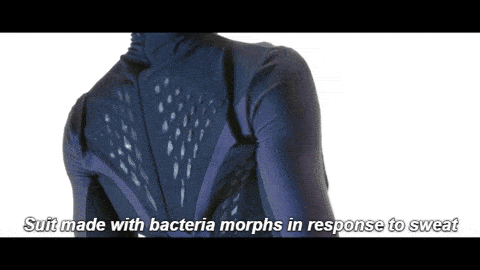When humans and nature work together, you can build some extraordinary designs. At MIT, living things are integrated using today’s most advanced gear – like biological 3D printers – to help solve human needs. In this particular case, a suit that self-regulates in response to humidity (the trigger is sweat) so you can work, dance or explore more comfortably.
The project called BioLogic was developed at MIT Media Lab’s Tangible Media Group where researchers learn to control biological mechanisms to come up with innovative designs. Lining Yao, the project lead, and her colleagues were inspired to make the self-actuating suit by traditional Japanese cooking which for hundreds of years has been using a bacteria called Bacillus subtilis. These bacteria or ‘nattocells’ rapidly respond to moisture expanding or contracting in a matter of seconds. In some cases, the bacteria can increase their volume by 50%.
Yao and team turned the bacteria into a nanofilm then injected it using an in-house design biological printer onto pieces of spandex. Different patterns gave rise to different behaviours. If the film was printed in lines, the fabric bends more sharply. If the bacterial coating is applied uniformly, then the fabric curls up. At 100 percent humidity, the flaps are completely open, allowing for maximum breathability, Wired reports. “With biology you can start to imagine functions that aren’t available for electronics,” Yao told Wired.
The nattocells are… well, alive. This means you can replicate the bacteria by the billions with little cost. In this case, scores of bacteria can be used instead of mechanical and electrical actuators, like tiny motors, significantly bringing down cost, while also providing a lot of value. In the future, it’s foreseeable that scientists will start to manipulate the DNA of organisms to exploit various biological effects. We’re only seeing the tip of the iceberg right now.










